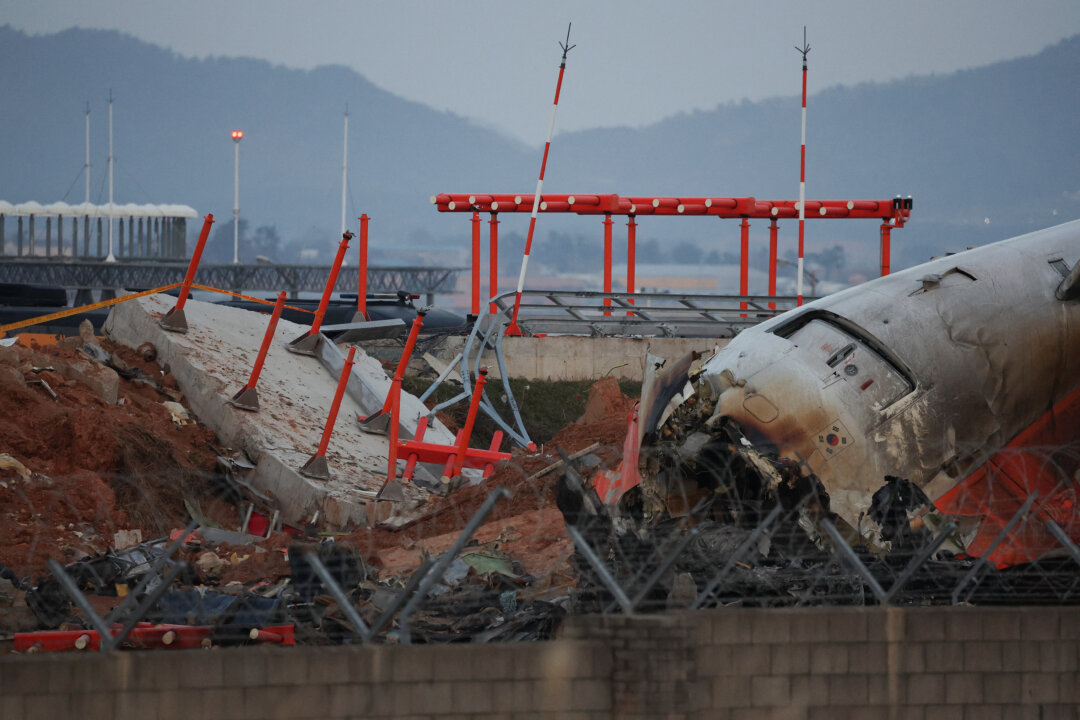The plane crashed at Muan International Airport on Sunday killing 179 of the 181 people on board.
Investigators in South Korea have finished extracting data from a flight recorder retrieved from the wreckage of the Jeju Air plane that crashed during landing on Sunday and will send it to the United States for analysis, government officials said on Thursday.
Sunday’s crash at Muan International Airport killed 179 of the 181 people on board the Boeing 737-800 operated by the South Korean budget airline.
Two people, crew members who were seated at the tail end of the plane, survived the crash. One of them was still in critical condition and the other was being treated for injuries, the Ministry of Land, Infrastructure, and Transport said.
While attempting to make an emergency landing at the regional airport, the plane overshot the runway and burst into flames after hitting a concrete wall at the end of the runway.
The cause of the crash—one of the worst aviation disasters to have taken place on the country’s soil—is still unclear.
Speaking at a press briefing on Wednesday, the Transport Ministry said the flight data recorder retrieved from the plane sustained some external damage and is missing a connector linking its data storage unit to the power supply, South Korean news agency Yonhap reported.
It is being taken to the United States for analysis in cooperation with the U.S. National Transportation Safety Board (NTSB), after officials concluded an analysis was unable to be completed in South Korea, the ministry said.
“We have determined that extracting data from the damaged flight data recorder here is not possible,” said Joo Jong-wan, director of the aviation policy division at the ministry. “And so we have agreed with the NTSB to send it to the U.S. and analyze it there.”
Officials did not provide an exact timeline for when the flight recorder would be transferred to the United States or how long the analysis would take.Investigators have also finished extracting data from the cockpit voice recorder and converting it to audio files, the ministry said, according to Yonhap.
The voice recorder was found in a relatively better condition than the flight data recorder, the publication reported.
Officials hope the recorders will provide critical information on the final minutes of the flight and help determine what caused the aircraft to crash-land in southwestern South Korea after departing from the Thai capital of Bangkok.
Some air safety experts believe the nearly two-meter-tall concrete wall—which housed multiple localizers to guide planes onto the runway during landings—exacerbated damage to the plane and should not have been at the end of an airport runway.
“This rigid structure proved catastrophic when the skidding aircraft made impact,” Najmedin Meshkati, an engineering professor at the University of Southern California, said on Wednesday.
Meshkati said it was concerning that the navigation antenna was mounted on “such a formidable concrete structure, rather than the standard metal tower/pylon installation.”
On Wednesday, authorities finished identifying all 179 people killed in the crash, allowing bereaved families to start making funeral arrangements.
Reuters contributed to this report.

